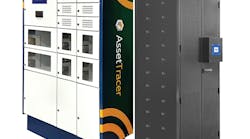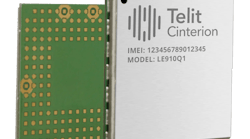(AP) -- The roots of radio-frequency identification technology stretch at least as far back as World War II, when transponders helped distinguish between Axis and Allied aircraft.
Over the years the concept has been greatly miniaturized, landing RFID technology in such settings as animal tags, toll-collection devices, passports, keyless entry systems for cars and wireless credit cards.
But perhaps none of these projects will have as much impact for consumers as the adoption of RFID in the supply chains of huge retail stores.
Mega-retailers led by Wal-Mart Stores Inc. have gotten their biggest suppliers to add RFID chips to pallets and cases shipped to stores. Now, rather than having people with bar-code scanners walk around to take inventory, RFID readers in warehouses can automatically tally items on the fly.
RFID is expected to yield substantial savings largely by reducing the frequency of the following scenario: A customer goes to a store for an item, only to find its shelf empty, even though replacement stock lurks somewhere in the back. It's one of the costliest problems in retail.
Simon Langford, Wal-Mart's director of logistics, distribution and replenishment systems, explains that a bar-code scanner can register that certain items have entered a store's back room. But not until one of the items gets scanned at checkout does the store typically get an update. In between, the item might be on a store shelf or still sitting among back-room clutter.
In the more than 500 stores where Wal-Mart has integrated RFID, radio tags give additional insight -- they inform employees when supplies enter the storeroom, when they leave it for the sales floor and when their emptied cartons are taken to the trash.
A University of Arkansas study last year determined that these stores saw a 16 percent reduction in the times that products were missing from shelves.
But Langford said that figure understated RFID's true power, because the study included popular items that sales staffers already were sure to replenish. When the research examined only items that Wal-Mart sold less than 15 times a day, the out-of-stock reduction was 30 percent.
Wal-Mart hopes to see even greater improvement soon by giving employees handheld RFID scanners that will direct them precisely to cartons of products they need to bring from the storeroom.
Eventually, individual products in Wal-Mart and other stores are expected to get their own RFID tags to give stores even clearer views of their inventory.
"That's really where the supply chain gets most messy," said Kevin Ashton, who helped drive RFID development at the Massachusetts Institute of Technology and now heads marketing for ThingMagic LLC, a maker of RFID readers.
Some high-value items like TVs and pharmaceuticals already have their own tags. But most item-level tagging is a decade away.
First, tag prices must drop below their current 5-to-7 cent range. Work also still needs to be done to master wireless interference issues that can arise in RFID-dense environments. And developers have to assure the public and retailers that data on the tags are secure and not invasive.
"We're seeing the RFID industry get a little bit more mature every day," Ashton said. "We don't view the RFID market as some overnight sensation."
Copyright 2006 The Associated Press. All rights reserved. This material may not be published, broadcast, rewritten, or redistributed.

